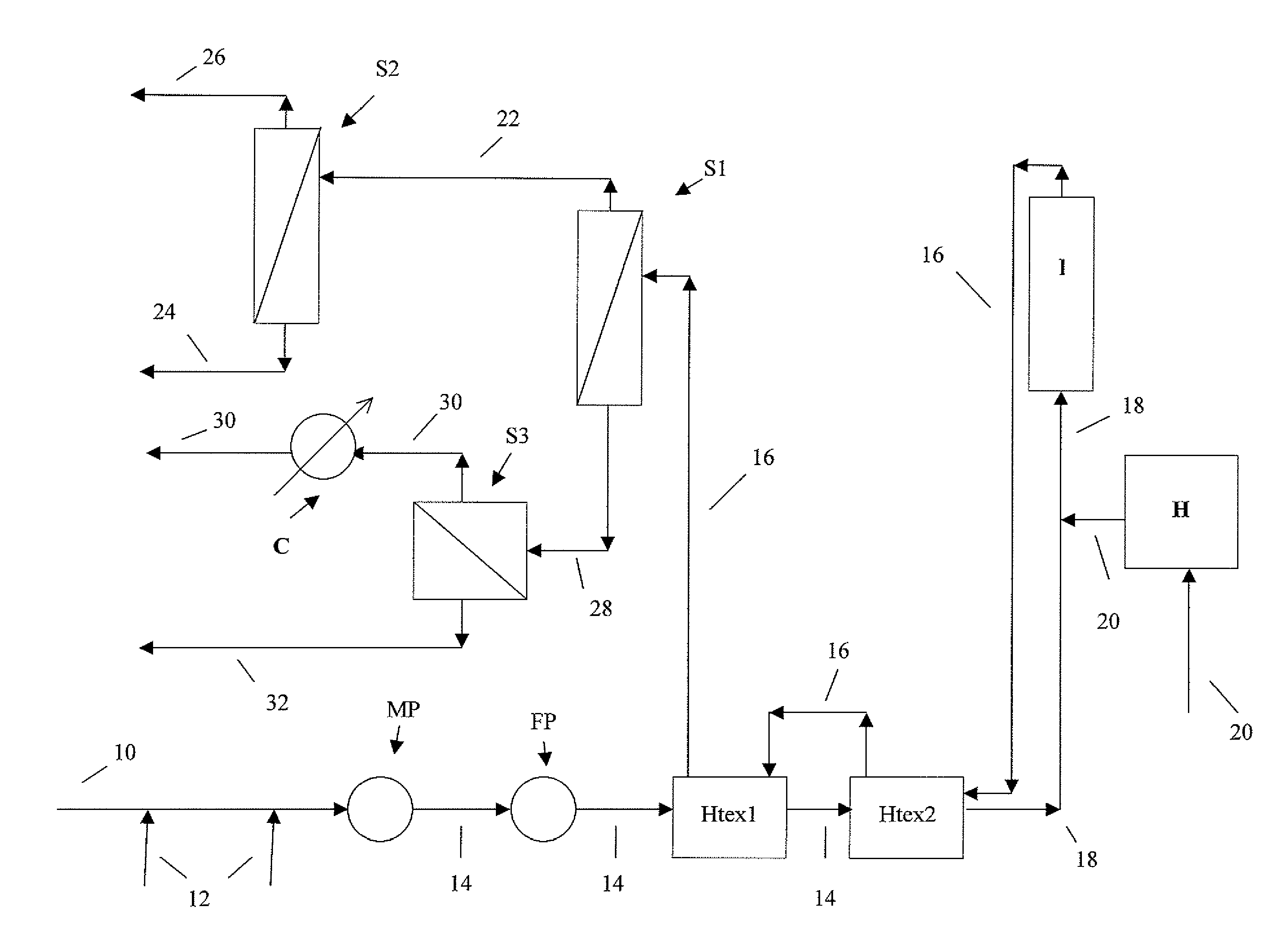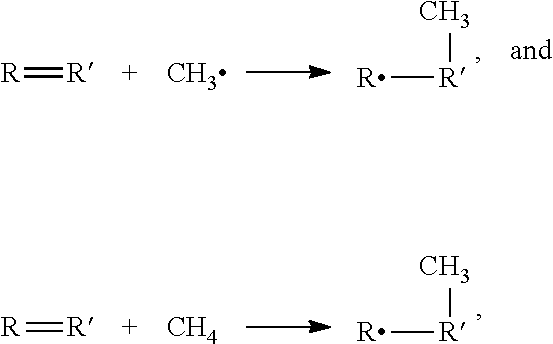Hydrothermal Conversion of Biomass to Hydrocarbon Products
a technology of hydrocarbon products and biomass, applied in the direction of biofuels, organic chemistry, chemistry apparatus and processes, etc., can solve the problems of low conversion rate, limited success, and product with little commercial valu
- Summary
- Abstract
- Description
- Claims
- Application Information
AI Technical Summary
Benefits of technology
Problems solved by technology
Method used
Image
Examples
example 1
[0041]In this experiment, algae was converted into hydrocarbon products using methane as a co-feed. One gram of dried algae, in a powder form, was mixed with 10 milliliters of water in a reactor vessel as previously described. The reactor was purged of air with helium. Methane was then added to the reactor until the reactor was pressurized to 9 bar of pressure gauge. The reactor was placed in a tin bath that was held at approximately 290° C. for three minutes. At that time, the temperature was raised to 370° C. The total time the reactor was in the tin bath was nine minutes.
[0042]The reactor was then placed in a water bath for rapid cooling to room temperature. A gas sample was taken from the reactor head space prior to opening the reactor. Upon opening the reactor a mixed liquid water, hydrocarbon phase was removed from the reactor and put in a centrifuge. After removal from the centrifuge the liquid phase was decanted leaving a solid, particulate layer at the bottom. The particula...
example 2
[0044]Municipal sewage sludge was converted into hydrocarbon products using a methane co-feed. In this experiment, the process was run in a manner similar to that given in Example 1, with the difference being that 5.7 grams of a digested sludge / water mixture was used as the biomass feed and mixed with 5 milliliters of additional water in the reactor. This resulted in a product stream comprised of the hydrocarbons and oxygenated hydrocarbons as shown in Table 2 below, which lists the major components in the products from highest quantity to lowest.
TABLE 2NameChemical Compound2-Hexadecene, 3,7,11,15-tetramethyl-C20H403,7,11,15-Tetramethyl-2-hexadecen-1-olC20H40OCarbon dioxideCO2n-Hexadecanoic acid (Palmitic Acid)C16H32O2Pentadecane, 7-methyl-C16H341-TetradeceneC14H281-OctadeceneC18H361-Pentadecene, 2-methyl-C16H32Dodecane, 2,6,10-trimethyl-C15H32Butanal, methyl-C5H10O1-DeceneC10H20Octane, 2,3,7-trimethyl-C11H24
[0045]Table 2 above shows the large degree of deoxygenation and alkylation ...
PUM
| Property | Measurement | Unit |
|---|---|---|
| temperature | aaaaa | aaaaa |
| temperature | aaaaa | aaaaa |
| pressure | aaaaa | aaaaa |
Abstract
Description
Claims
Application Information
 Login to View More
Login to View More - R&D
- Intellectual Property
- Life Sciences
- Materials
- Tech Scout
- Unparalleled Data Quality
- Higher Quality Content
- 60% Fewer Hallucinations
Browse by: Latest US Patents, China's latest patents, Technical Efficacy Thesaurus, Application Domain, Technology Topic, Popular Technical Reports.
© 2025 PatSnap. All rights reserved.Legal|Privacy policy|Modern Slavery Act Transparency Statement|Sitemap|About US| Contact US: help@patsnap.com



